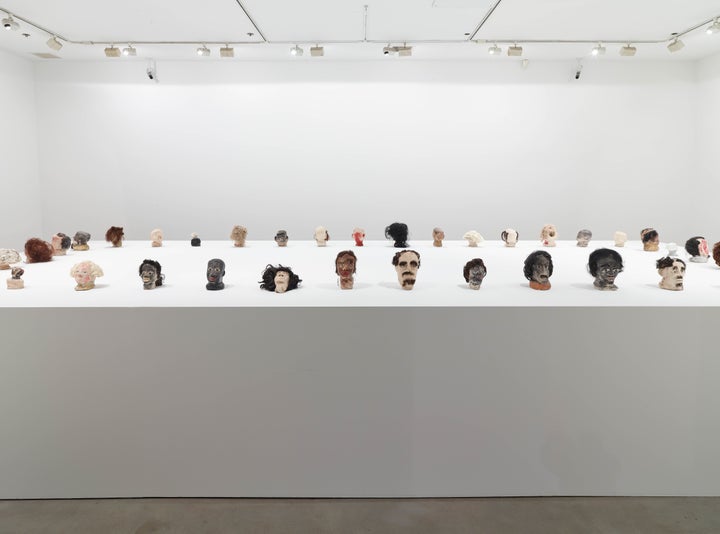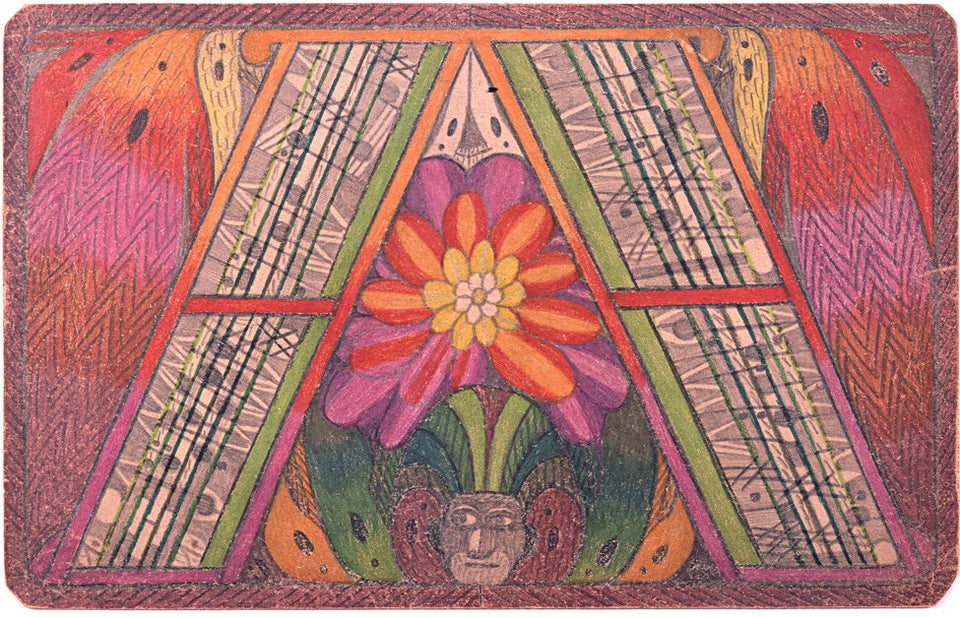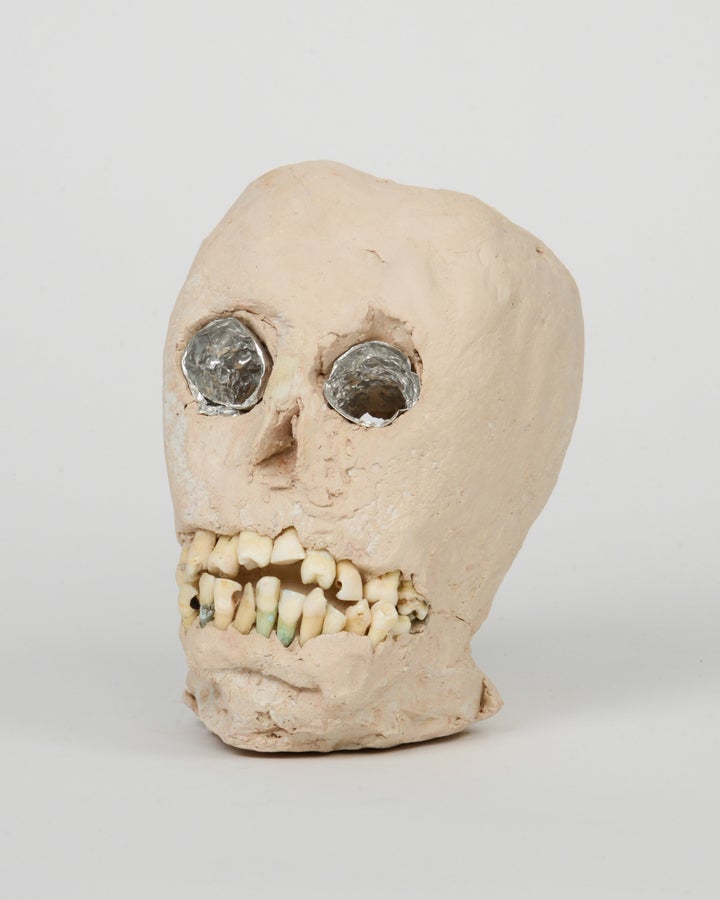
Somehow, James "Son Ford" Thomas's boxy, clay sculptures of skulls evoke the damp presence of death more than any genuine skull could. Rather than emulating their biological reality, Thomas creates simple yet mangled visions of our rotting bones, the kind that populate children's nightmares.
One hundred of Thomas' unfired clay objects are currently on view at New York University's 80 Washington Square East Gallery, part of the exhibition "James ‘Son Ford’ Thomas: The Devil and His Blues." The show also features two documentary films chronicling his life's work.
James Thomas was born in 1926 in Eden, Mississippi, and was raised by his maternal grandparents in the impoverished rural South. Throughout his life, Thomas fixed motors, painted houses, sold sculptures and dug graves. His family called him Son for short. He earned the second half of his nickname after crafting Ford trucks and other cars out of a native clay dubbed "gumbo." He picked up the skill from his Uncle Joe and the passion never faded.
"This [sculpture] is all done by head, not by no book or no picture," Thomas said to Souls Grown Deep. "I have never went to school to do this. No teacher has ever taught me nothing about it. My Uncle Joe was the first person that showed me... A lot of days I would be by myself and I'd walk two or three miles to get me some clay and I'd come back home and sit up by the fireplace at night and make things until I got sleepy. I got where I could make mules, and rabbits, and squirrels, and things like that, and from that I went to making birds."
Specifically, Thomas took up sculpting quails, a nod to the Jim Crow-era law prohibiting black people from killing the particular breed of game bird. "In Mississippi the white people didn't want the colored people to eat no quail," Thomas explained. "See, they had more meat than other birds... better meat."
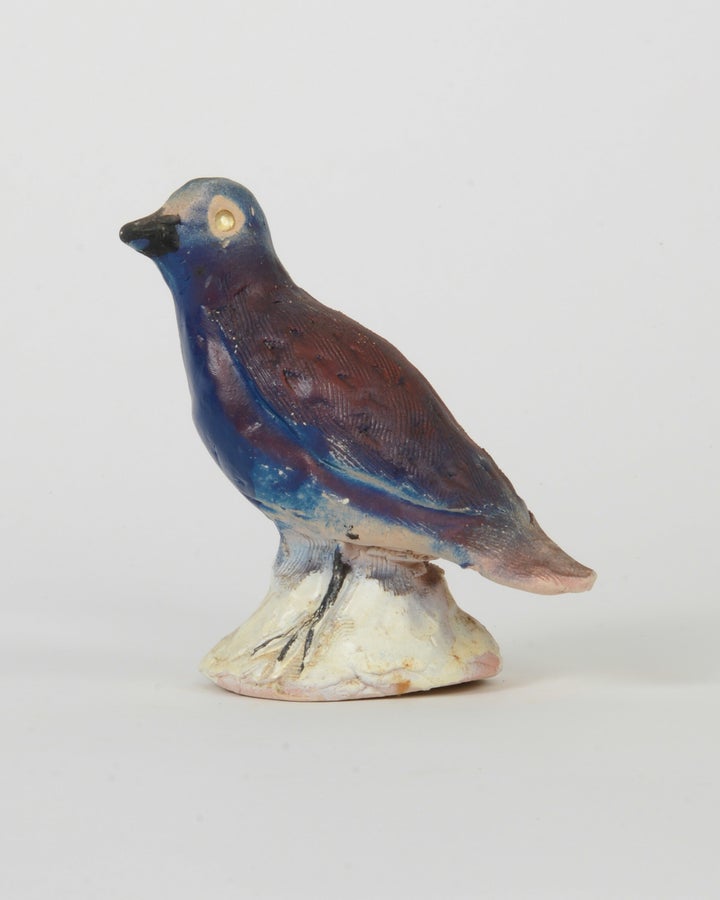
Thomas spent his entire life in Mississippi, marrying a woman he met on the cotton fields when she was only nine -- they married when she was 14. Together they had 10 children before he died in 1993.
The exhibition features 11 skulls, all untitled, misshapen loaves of bone-colored-clay with sunken cheeks and eyes and nostrils gauged out. The sockets, lined with aluminum foil, reflect the endlessness of their recession. The skulls' mouths are lined with dentures, pebbles and real teeth. Thomas designed the gruesome masses to double as pencil holders and ashtrays. Looking one in the face feels like imagining a cartoonified version of a loved one whose body, deep underground, has begun to rot.
"A skull has got to be ugly because it's nothing but bones and teeth," Thomas has said. "People are more likely to be interested in something like that than they would be in a bird. They'd rather see a skull. Then too, a lot of people have never seen a real skull and they're probably wondering how it will be when they die. They say, "Will I be in the same shape that skull there is in?"
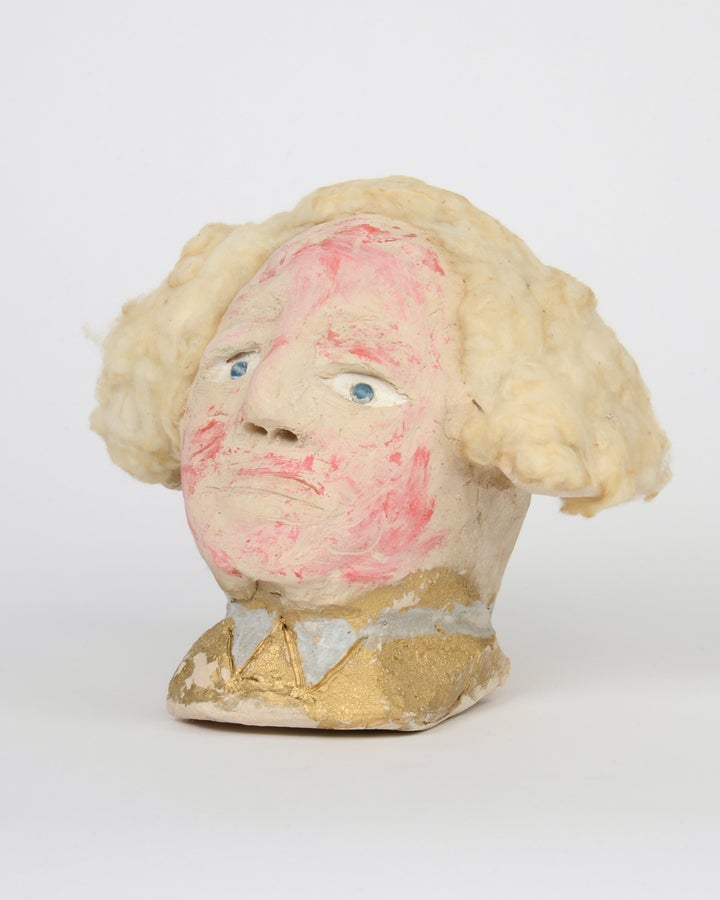
Along with the skulls, the exhibition features a variety of human busts, depicting neighborhood characters, imagined faces and presidential portraits. His sickly George Washington bust, face smudged with pinkish blood, dons a wig made from cotton, an allusion to his childhood days picking cotton with his grandfather. The myriad busts feature marbles for eyes, corn kernels for teeth, jewelry and accessories fashioned by Thomas himself. As explained in a review for Hyperallergic: "The skulls, which ought to be fixed, are as plastic as Vaudeville comedians, while the faces, which ought to be plastic, are as eerily frozen as a candid photo of someone recently dead."
Along with sculpture, Thomas also possessed a passion for guitar, one he discovered as a child and pursued throughout his life. Those who know his name are most likely familiar with his career as a Delta Blues musician.
Although the 80WSE Gallery exhibition focuses primarily on Thomas' sculptures, the influence of the blues is never far away. To quote Cornel West, Thomas' objects constitute "a blues-soaked world, a planet where catastrophe and celebration -- joy and pain sit side by side." Though West wasn't referring directly to Thomas' work, take the world he describes and stir in the twofold presences of spirituality and nature, life and death, art and music, and you've got yourself Thomas' sculpted universe.
"James ‘Son Ford’ Thomas: The Devil and His Blues" is on view at 80 Washington Square East Gallery from June 9th to August 7th, 2015.
